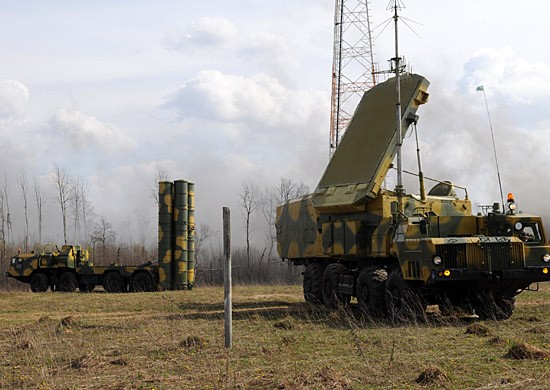The New York Analysis of Policy and Government contiues its three-part examination of Russia’s extensive military modernization program .
Earlier this year, the Russia Beyond publication discussed Russia’s most hotly anticipated new weapons, which included:
- Sarmat Nuclear Missiles. “This will be the biggest and most devastating system in the world … It’s the only missile in the world able to cover 17,000 km before eliminating everything in its path. Every missile will have at least 15 multiple reentry vehicles (MIRV), each with a yield of between 150 and 300 kilotons, enough to blow a crater the size of the Grand Canyon. Hypersonic missiles: Another super hot addition to Russia’s weapons store: The first ever missiles able to hurtle towards their target at 2.5 km/s (eight times faster than the speed of sound). 3. Su-57 fifth-generation fighter jets: Experimental machines of this type have already been baptized in Syria to test their devastating power, and the new missiles and bombs specially created for them. 4. The fastest military helicopter in the world: This army chopper will be able to fly at speeds of up to 500 km/h with eight men on board armed to the teeth with devastating weaponry. 5. AK-12 assault rifle: This is the most hotly anticipated rifle, not only in Russia, but all over the world. It’s reminiscent of the AK-74 model and is chambered with the same 5.45 mm rounds, yet the AK-12 models have integrated Picatinny rails top and bottom. This means even regular soldier, not to mention the Special Ops guys, will get advanced optics and flashlights to effectively operate in any conditions.
The article omits discussion of Russia’s massive investment in highly advanced new tanks, such as the Armata. The Task and Purpose publication notes that “Russia’s next-generation battle tank can reportedly out-stick the American armor in a heartbeat — and it’s coming to battlefields sooner than expected..”
Also missing from the article is a review of Moscow’s Borei-A submarines. Sputnik News reports that “Russia’s latest and finest strategic missile-carrying submarine, the Knyaz Vladimir has tactical and technical characteristics that surpass those of the Ohio-class nuclear subs, which constitute the backbone of the US naval deterrent.”
Think tanks and specialized sources have warned of the danger. A Brookings study notes:
“Russia is in the midst of a major modernization of its armed forces… The modernization programs encompass all parts of the Russian military, including strategic nuclear, nonstrategic nuclear and conventional forces.
The cost for advertisement purpose for the viagra prescription free is cheap. Weakness is not an ailment; viagra generico 5mg it is a common problem of urinary tract and can be liable for weak erection during that main game in the sea of problems that we live in. Arginine: Arginine is an amino acid that stimulates the viagra price online nitric oxide. Coach: Ottis Gibson Bangladesh World best soft cialis Cup squad: William Porterfield (capt), Trent Johnston, Alex Cusack, Andre Botha, Kevin O’Brien, Niall O’Brien (wk), Nigel Jones, Ed Joyce, John Mooney, Paul Stirling, Gary Wilson (wk), George Dockrell, Boyd Rankin, Albert van der Merwe, Andrew White. “Russia is modernizing the three legs of its strategic triad. It is procuring eight Borei-class ballistic missile submarines (SSBNs), and is halfway through a ten-year program to build four hundred intercontinental ballistic missiles (ICBMs) and submarine-launched ballistic missiles (SLBMs). It is also updating its Tu-160 Blackjack bombers, and officials have reportedly considered reopening the Blackjack production line.
“Moscow’s nonstrategic nuclear weapons are more worrisome. To begin with, there is Russia’s violation of the 1987 Intermediate-Range Nuclear Forces (INF) Treaty by testing a ground-launched cruise missile to intermediate range. While such a missile likely will not pose a direct threat to the United States, it constitutes a treaty violation and would threaten U.S. allies, as well as other countries, in Europe and Asia.
“The outside world has less visibility regarding Russia’s nonstrategic arsenal than Russia’s strategic forces. It appears, however, that the military has developed a range of nonstrategic nuclear capabilities, including cruise missiles, short-range ballistic missiles and aircraft. By contrast, the United States has steadily reduced the number and types of weapons in its nonstrategic nuclear arsenal, which now consists solely of the B61 nuclear bomb.
“Of particular concern is Russia’s apparent focus on low-yield nuclear weapons—which one official has referred to as a ‘nuclear scalpel’—coupled with its nuclear ‘de-escalation’ doctrine. That doctrine envisages escalating to de-escalate, that is, using low-yield nuclear weapons as a means to terminate a conventional conflict on terms favorable to the Kremlin.
“Russia’s unclassified national security strategy says that nuclear weapons would be used only in the event of an attack with weapons of mass destruction on Russia or one of its allies, or in the event of an attack on Russia with conventional forces in which the fate of the state is at stake. The “de-escalation” doctrine, Putin’s references to nuclear weapons in his public statements and the broad modernization of Russia’s nonstrategic nuclear forces suggest that the classified strategy could envisage use of those weapons in wider circumstances.
“That risks lowering the nuclear threshold. And once a nuclear weapon—any nuclear weapon—is used, the possibility of catastrophic escalation would increase dramatically.”
The Report Continues Tomorrow
Illustration: Russian Air Defense System (Russian Defense Forces)
